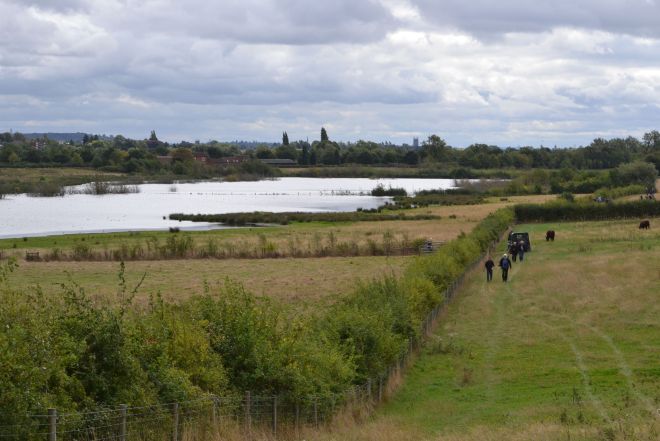August was in danger of passing without a blog post until upon my rising a little late today a British and European bird list addition leapt out at me from RBA. The previous evening a Marbled Duck, the first in Great Britain since 2014, had been discovered on gravel pits by the village of Grimley, near Worcester. At 85 miles this was well within my preferred range and so would offer an ideal day out after a weekend spent mostly at home.
This duck, also known as Marbled Teal, is a scarce and localised breeder in the southern Iberian peninsula, north-west Africa and western Asia. I had previously failed to find it in Spain, where there is a small and declining population, in May 2012. Later in November 2015 I enjoyed a very good experience of them in the Souss Massa national park on Morocco’s Atlantic coast (see here). I was now intrigued that this Worcs individual, a juvenile was not being treated as plastic by RBA. So I checked local birding resources to see what was being said about its provenance.
Worcestershire and West Midlands’ birders who had already filmed and gained pictures of the visitor (see here and here) described it as being un-ringed, fully-winged and wary; all good credentials for a genuine vagrant rather than an escape from captivity. Late August is also the right time of year for a juvenile to disperse from its breeding ground and in this case stray rather too far. But it remains to be seen what the BOURC will decide.

Camp Lane GPs, Grimley, Worcs
After a thankfully stress-free drive west along the A40 from Oxford then north on the M5 motorway, I easily located the site described as Camp Lane GPs (SO831598) about 10 miles from junction 6 north of Worcester. After following a public right of way out to where a group of maybe 30-something birders were gathered (pictured above), I was at once put onto the Marbled Duck that was sitting in the top of a shrub on the far side of the pit. Later arriving birders who I assisted all seemed as puzzled as myself initially to realise they were looking for a duck in such a situation rather than on the water.
Apparently the bird had barely moved from this position for an hour previously, and so it remained alternately dozing then preening and occasionally putting its head up to look around. This medium-sized, slender, pale sandy brown duck with a dusky oval eye-patch certainly stood out amongst the drab, eclipse-plumaged wildfowl with which it had settled. The body plumage is diffusely blotched with off-white spotting that is more prominent in juveniles. Marbled Duck also has a long-necked, large and round-headed appearance with a slim, dark-toned bill.
In the circumstances the digiscoped images (above) were as good as I was likely to get, and at least record that I was there and saw this bird, which is always my first priority. After around 30 minutes I was joined by fellow Oxon Birder Adam, who maintained his knack of arriving at just the right moment since shortly afterwards the duck hunkered down into the shore-side vegetation and was lost to view for a while.
We both scanned around hoping our quest would re-emerge onto the water and offer some better picture opportunities, but that was not to be. Eventually the MD sat up again in exactly the same spot, before stretching its wings with a brief fly around. After returning to the exact same place and climbing up to the favourite perch once again the former routine was resumed. In flight the wings appeared long and pale without a marked pattern (see here). When it next flew the duck landed in an area away to our right though still distantly, and two local patch watchers suggested we might get better views from other spots they knew.
We then followed those birders on a circuit of the site (pictured above) that struck me as a superb location for attracting migrants. It seemed difficult to believe these former gravel pits are not already managed as a nature reserve, such was their wildlife and visitor friendliness alike. But we could not re-locate the Marbled Duck that as a species is known for being secretive, often hiding in vegetation. So pleased with our views already we left after what had been a very satisfying bijou twitchette.
I haven’t been inactive in the five weeks since this journal’s last post, but have just not done anything that I can make a decent story of. So though my wildlife garden at home is looking rather more tidy, lethargy has been in danger of setting in. What a contrast a new and different bird to go and see, and the buzz that comes from it makes.





